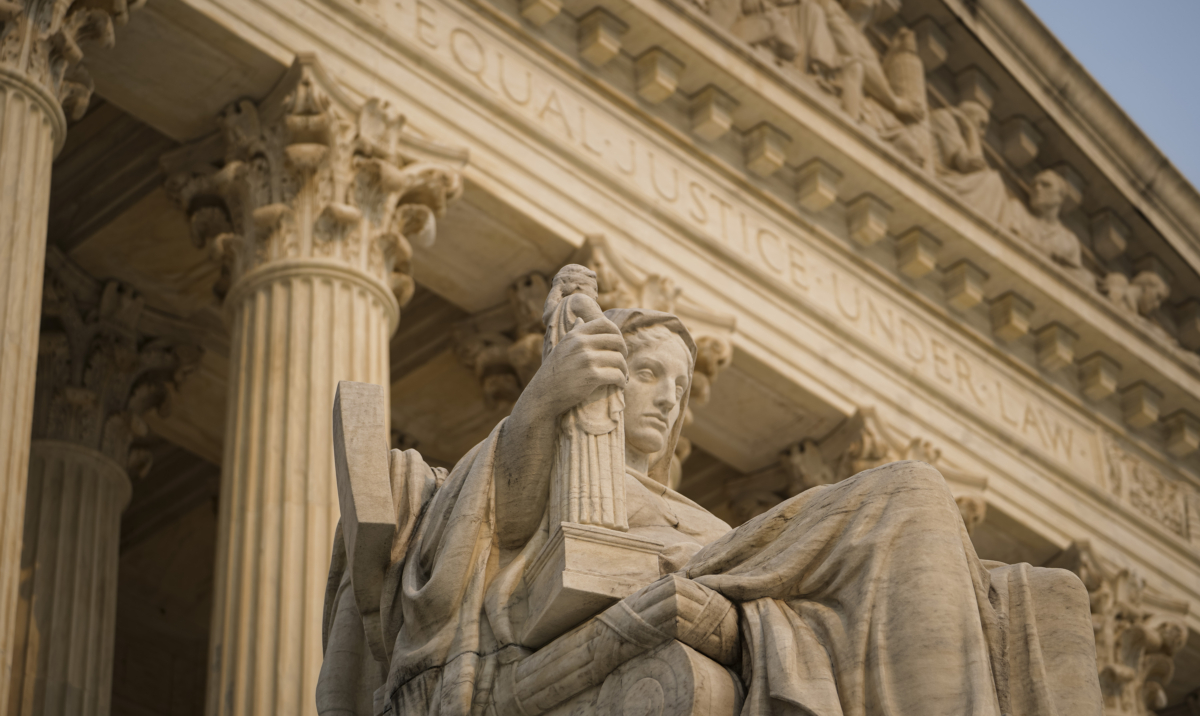


The U.S. Supreme Court sent a redistricting case back to the Supreme Court of Ohio for reconsideration after it recently rejected a theory holding that state legislatures have sweeping authority to make the rules for federal elections in the states without interference from the courts.
The new decision came on June 30, the day the U.S. Supreme Court wrapped up its recent session and recessed for the summer.
Republicans currently dominate Ohio’s congressional delegation. Republicans hold 10 of the state’s U.S. House seats, while Democrats have five. One U.S. senator is a Republican; the other, a Democrat. Republicans also control both chambers of the Ohio General Assembly.
Ohio Republicans argued in support of the independent state legislature doctrine, under which Republicans say that the U.S. Constitution has always directly authorized state legislatures alone to make rules for conducting federal elections in their respective states. Democrats said it was a fringe conservative legal theory that could endanger voting rights, enable extreme partisan gerrymandering in the redistricting process, and cause upheaval in election administration.
But the nation’s highest court rejected the doctrine, finding in a case from North Carolina called Moore v. Harper on June 27 that the Constitution’s Elections Clause doesn’t vest exclusive authority in state legislatures to set the rules regarding federal elections.
Chief Justice John Roberts wrote in the court’s opinion that “state courts retain the authority to apply state constitutional restraints when legislatures act under the power conferred upon them by the Elections Clause.”
“But federal courts must not abandon their own duty to exercise judicial review,” Mr. Roberts wrote.
“In interpreting state law in this area, state courts may not so exceed the bounds of ordinary judicial review as to unconstitutionally intrude upon the role specifically reserved to state legislatures” by the Elections Clause, which “does not insulate state legislatures from the ordinary exercise of state judicial review.”
In the case at hand, Ohio Senate President Matt Huffman, a Republican, invoked the doctrine when he challenged a ruling by the Supreme Court of Ohio that found the state’s congressional map was unconstitutionally gerrymandered to benefit Republicans.
Republican state lawmakers denounced the state court’s decision at the time as “fundamentally flawed.” They claimed the ruling interfered with their legislative authority “in multiple ways.”
“While many believe that the Ohio Supreme Court majority misinterpreted state law, there is also the broader concern that the Court assumed a role the federal Constitution does not permit it to exercise,” the lawmakers said.
In his petition (pdf), Mr. Huffman wrote that the Ohio court “correctly recognized that the legislature’s work of drawing congressional district maps deserves the highest deference.”
But in its decision, “it forgot about that deference. Instead, it trampled on the legislature’s work by inventing new state constitutional law and demanding that Ohio’s congressional district map put six Democratic candidates in the United States House of Representatives. The Elections Clause does not permit such impertinent judicial overreach.”
Respondent Meryl Neiman, an attorney and Democratic Party organizer, filed a brief (pdf) in opposition to the petition.
Contrary to Mr. Huffman’s submissions, “the Elections Clause is not an escape hatch for a state legislature to wriggle free of its own state constitution, particularly of constitutional provisions the legislature itself established and endorsed in an effort to reflect the will of the voters,” Ms. Neiman wrote.
“Under any plausible reading of the Elections Clause, it leaves room for state courts to apply specific constitutional anti-gerrymandering provisions by invalidating an unconstitutional map and sending it back to the state legislature to redraw. That is all this case is about.”
On June 30, the U.S. Supreme Court summarily granted the petition in Huffman v. Neiman (court file 22-362), while at the same time skipping over the oral argument phase when the merits of the case would have been considered.
The court issued an unsigned order and did not explain its decision. No justices dissented.
After granting the petition, the court vacated the judgment of the Supreme Court of Ohio, and remanded the case to that court in light of its decision in Moore v. Harper.
Lawyers call this process GVR, which stands for grant, vacate, and remand.
The Epoch Times has reached out for comment to Mr. Huffman’s attorney, William Dornette of Taft Stettinius and Hollister in Cincinnati, and Ms. Neiman’s attorney, Abha Khanna of Elias Law Group in Seattle.
But Mr. Huffman said in a statement after the U.S. Supreme Court acted that his appeal “clearly recognized serious constitutional concerns.”
“We are reviewing the U.S. Supreme Court’s message to determine the path forward,” he said, as reported by the Ohio Capital Journal.
The outlet quoted Freda Levenson, legal director for the ACLU of Ohio, saying if the Supreme Court of Ohio correctly applies Moore v. Harper to the case it would affirm its prior ruling that rejected the congressional map.
“What SCOTUS said in Moore was that legislatures must follow their state constitutions—consistent with what the Ohio Supreme Court already decided,” she said.
